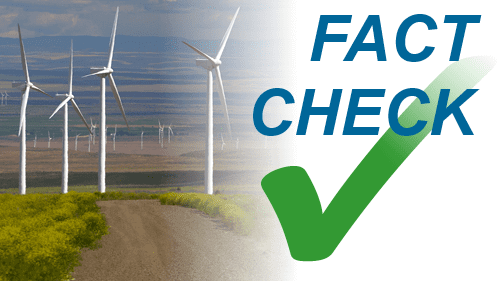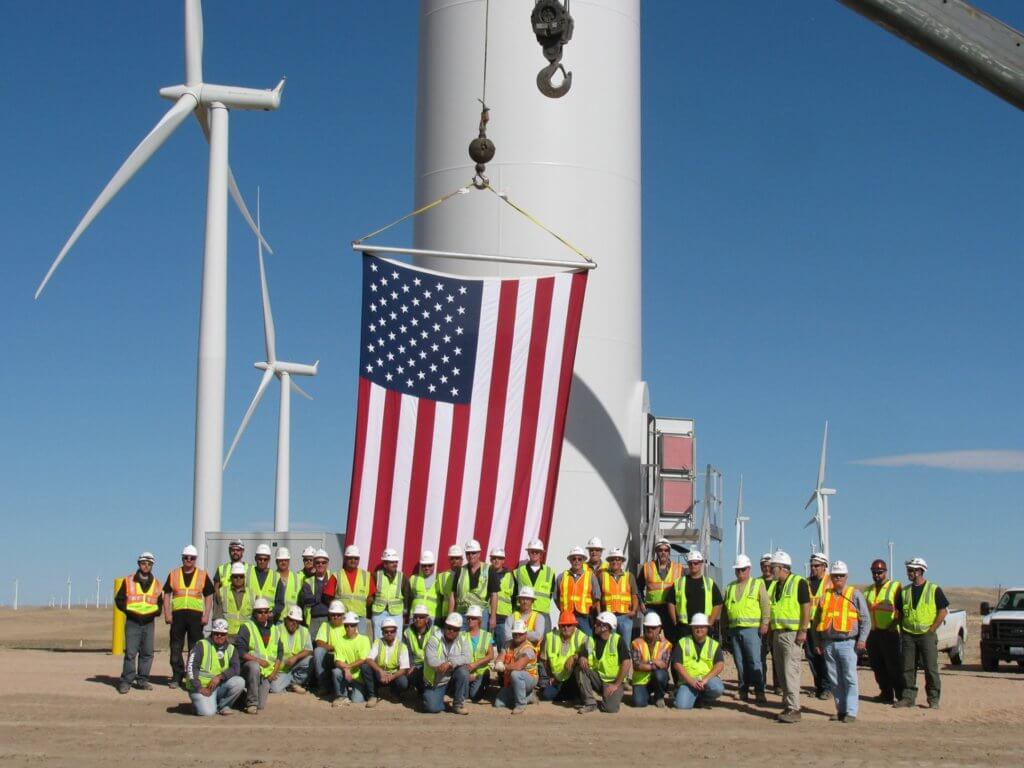Fact Check: The electricity grid relies on diversified sources
Over the last two years, a parade of Fortune 500 companies have made substantial wind power purchases, citing low cost and price stability as reasons why wind power is good for their bottom lines. However, some observers have recently misunderstood how these deals work.
The electricity grid is like an ATM
As we’ve previously explained, the electricity grid can be thought of like an ATM. When a corporate buyer of wind energy says it’s buying enough wind to power a data center for example, that doesn’t necessarily mean the electricity generated by a wind farm feeds directly into the data center. Not only is that technologically impossible, grid operators wouldn’t want to design their system that way.
Here’s how we’ve explained the way companies power their data centers, stores and factories with wind energy in the past:
Say you deposit $20 in the ATM near your office. A short time later, you withdraw it from the ATM near your house. You now have a different bill than the one you deposited, but that’s irrelevant; you still have $20.
This aspect of the banking system is analogous to how the electric power system works: it aggregates all sources of electricity supply and demand over a large geographic area, allowing one to add wind energy in one area and use an equivalent amount of electricity somewhere else on the grid.
Just as it would be impossible and pointless to insist that the $20 bill you withdrew in the banking example be the same bill you had deposited earlier, it would be impossible and pointless to require an electricity user to specify the exact power plant they receive energy from.
The integrated nature of the grid allows companies who wish to use wind energy to add it where it is most cost-effective to do so, even if the location of their primary demand center is in an area that is less suitable for wind generation. Many large companies are now using this strategy to increase the percentage of clean energy on the grid, adding supply in one area and using an equivalent amount of electricity in another. Purchasing wind energy in this way allows these companies to meet their sustainability goals while saving money.
And since the cost of wind has fallen by two-thirds over the past seven years, these companies understand that wind is an economic investment, helping them both hit sustainability targets and reduce fuel price risk at the same time.
No source generates electricity all of the time
Other observers have criticized wind power purchase agreements for factories or data centers by noting that wind doesn’t generate electricity all of the time. But the reality is no energy source does. The average wind turbine generates electricity 90 percent of the time, and modern wind farms often have capacity factors exceeding 40 percent. That’s close to coal plants and exceeds some types of natural gas plants. The performance of all power plants can verified using U.S. Energy Information Administration (EIA) monthly electricity generation data that is provided for individual utility-scale power generators.
That’s why a diversified power system makes sense. Grid operators can balance out the system as supply and demand fluctuate. And unlike conventional plants, which can go offline suddenly and unexpectedly, removing large amounts of power from the grid, changes in wind output are gradual and can be predicted many hours or even days in advance. The truth is all power sources are required to provide the same reliability services, and wind can actually offer some traditional methods of generation cannot.
With enough wind now online to power 24 million homes, wind energy plays an important role in creating a strong and diversified energy mix. That diversification is a key point to keep in mind when evaluating our power system, and it’s one observers all too often misunderstand or ignore.
Check out this video for another look at how wind power helps keep the lights on for American families and businesses.




